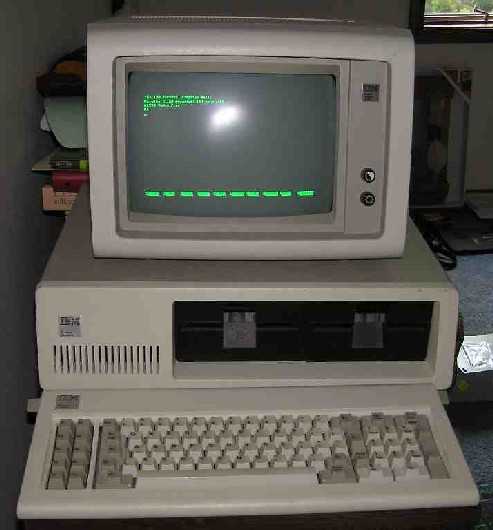





|
NAME |
PC - Model 5150 |
|
MANUFACTURER |
IBM |
|
TYPE |
Professional Computer |
|
ORIGIN |
U.S.A. |
|
YEAR |
1981 |
|
BUILT IN LANGUAGE |
IBM BASIC (Special Microsoft BASIC-80 version in ROM) |
|
KEYBOARD |
Full stroke 'clicky' 83 keys with 10 function keys and numeric keypad |
|
CPU |
Intel 8088 |
|
SPEED |
4.77 MHz |
|
COPROCESSOR |
Optional 8087 math coprocessor |
|
RAM |
64 KB (The very first ones had only 16 KB) |
|
ROM |
64 KB |
|
TEXT MODES |
40 or 80 char x 25 lines |
|
GRAPHIC MODES |
Optional CGA graphic modes : 320 x 200 / 640 x 200 |
|
COLORS |
Monochrome / 4 among 8 in 320 x 200 CGA mode |
|
SOUND |
Tone Generator - built-in speaker |
|
SIZE / WEIGHT |
50.8 (W) x 40.6 (D) x 14 (H) cm |
|
I/O PORTS |
Five internal 8 bit ISA slots, monitor, Centronics, cassette (!), |
|
BUILT IN MEDIA |
One or two 160 KB 5.25'' disk-drives |
|
OS |
MS-DOS, CP/M-86 |
|
POWER SUPPLY |
Built-in 63.5W switching power supply unit |
|
PERIPHERALS |
5 expansion slots, 5, 10, 20 MB hard discs |
|
NAME |
PC - Model 5150 |
|
PRICE |
ё1736 (1 FD, monochrome monitor, U.K., 1983) |
|
IBM 5150
|
|
IBM PC - Model 5150 |
|
interested, they then asked a small company Microsoft (famous for its BASIC Programming Language)
to write the operating system. Microsoft wasn't capable of doing it. Bill Gates bought the rights to a small, hacked
OS written by a small company called Seattle Computer Products: QDOS (which reportedly stood for "Quick and Dirty
Operating System", which itself bears a striking resemblance to CP/M), which became PC-DOS and then later MS-DOS!
|
